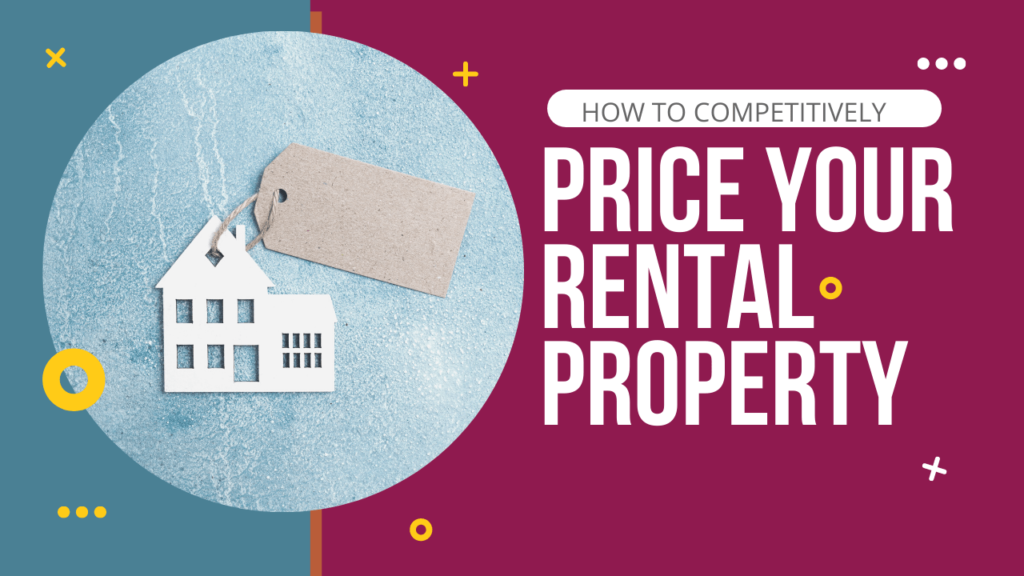
Competitive pricing will help you minimize vacancy and maximize income with your Las Vegas rental property. It might seem as easy as attaching a figure that makes sense, but there’s actually an art and a science that goes into accurately pricing your property.
The wrong rental value will result in either a long vacancy, lost money, or a parade of unqualified tenants who are willing to pay more than good tenants will.
It’s important to give your investment property a rental value that’s both profitable and competitive.
How do you arrive at this number?
We have some ideas, based on over 20 years of experience leasing rental homes and attracting good tenants. To competitively price your property, you have to understand the rental market and the tenants you’re likely to attract. You also need to compare your property to the competing homes on the market.
Location matters, property condition plays a big part, and even time of year can impact what you’re able to charge.
Let’s take a look at how to competitively price your Las Vegas rental property. We’ll show you how to ensure the rental price isn’t too high or too low. The goal is to maximize what you earn and to get the property rented to great tenants as quickly as possible.
Study the Las Vegas Rental Market
Rental values always start with the market. It doesn’t matter how beautiful your rental home is or how much you paid for it. You can’t price the property based on what you need to earn in order to generate positive cash flow.
The market is the main driver.
You’ll need to know your competition, you’ll need to know the inventory and the demand, and you’ll need to access accurate and up-to-the-minute data that tells you what similar homes in your neighborhood are renting for at the time.
It’s also important to understand the economy, especially the local economy. If business is bad, you’re not going to be able to set the highest rental prices. If new industries are moving into the area, however, and the population is growing, you can increase what you ask and feel pretty comfortable that new tenants will show up, willing to pay the price for an attractive, well-maintained rental home.
Here’s an example. During a recession, like what we experienced in 2008 or even recently, during the first few months of the COVID-19 pandemic, lots of cities, including Las Vegas, faced a serious economic hit. Casinos were closed and tourism came to a halt. At points like this, you’ll have to expect that you’re going to reduce your rental rates as demand for rental homes drops.
Recently, values have been going up and so have rents. That allows you to ask a bit more than you likely were a year or two ago.
The local economy always has more bearing on your rental value than the national or global economy. This is a market-driven conversation, especially when we’re talking about rent prices.
Get To Know the Competition
In addition to understanding the market, you have to understand your competition. Research the properties in your specific neighborhood and what they’re renting for. This will impact your rental rates because you’ll have to be close to the same range. Typically, you’ll find what other homes are renting for by visiting websites and rental sites. You can also get creative by inquiring about a property and how much it’s renting for. Or, talk to Las Vegas property managers who can tell you both what homes were listed for and what they ended up renting for.
Don’t be afraid to visit these competing properties. Even if you don’t schedule an actual showing, you can take a virtual tour or look at photos on the listing. It’s important that you’re able to measure your own amenities and features against those that you’re seeing with competing properties. That’s going to impact what you charge in rent.
Some of the things you’ll need to compare when you’re looking at your own rental property versus the competition include:
- Square footage of the home or unit.
- Lot size.
- Age.
- Number of bedrooms and bathrooms.
- Recent updates or renovations.
- Amenities, both private and communal.
- Location.
- Pets and whether they’re permitted.
When you discover that your Las Vegas rental property has more to offer than others on the market, you can list your rental value a bit higher than average. When you’re struggling to keep up with what the competition can provide, consider dropping your price a bit below the average rents so you can quickly attract tenants who are prioritizing value over size and condition.
Season and Location: Impacts on Your Las Vegas Rental Value
Location is everything when it comes to real estate. It should come as no surprise that it impacts the amount you can charge in rent for your property. Well-located properties will earn more. Competitively price your home according to its neighborhood, address, zip code, and local amenities.
When you’re in a good school district, you’ll have an easy time asking for more rent. Tenants with families are willing to pay more to send their kids to highly rated schools. You can also charge more when your property is close to grocery stores, retail shops, restaurants, and recreation. If you’re in a remote part of the desert, you’re going to have to lower your price a bit and really make it competitive if you want to attract tenants quickly.
Many rental properties are now in HOA communities, where there may be pools, fitness centers, and clubhouses. All of these types of amenities will help you earn more in rent. Pay attention to the geography of your investment both when you’re buying and when you’re deciding to list it and determining what it’s worth.
Timing also counts. You’re going to have to consider the season when you’re pricing your rental home.
Most tenants make their moves in the late spring and summer. This will drive up demand, making it easier for you to increase what you ask in rent. During the winter and around the holidays, however, you may need to drop that price. Fewer tenants are looking for new homes and you won’t have as many people scheduling showings and turning in applications.
According to the U.S. Census, the number of household moves peaks in June.
You always have the option of adjusting your lease terms to meet the needs of high rental seasons. Offer a 15-month lease or an 18-month lease if you want to be sure you’ll be turning over the property during peak rental season.
Control What You Can: Las Vegas Rental Property Condition
 There’s not much you can do to change the economic outlook. You can’t decrease the competition or increase the demand.
There’s not much you can do to change the economic outlook. You can’t decrease the competition or increase the demand.
If you already own the investment property and you’re not looking for a new acquisition, you cannot even do much about the location of the property.
However, you can control the property condition. You can decide whether you’re renting out an exceptional home that’s worth high rents or a so-so home that will barely bring in the median Las Vegas rent.
A competitive rent reflects what you have to offer.
Your modern, functional Las Vegas rental property that looks inviting and move-in ready will earn a much higher rent than a property that’s deteriorating, looking worn, and dirty.
Make the most of what you can control when it comes to pricing and provide a home that tenants are eager to rent.
Some of the best cost-effective upgrades and updates that will have the largest impact on your rental price include the following:
- Fresh paint. This isn’t difficult nor is it expensive. Before you list and price your property, make sure the inside gets a fresh coat of paint. Instead of touch-up work, paint entire walls. Keep the colors neutral.
- Matching appliances. You don’t have to invest in stainless steel, but you do want all of your kitchen appliances to match. They should run reliably and be energy efficient as well. This will increase your rental value and save on energy costs.
- Improved flooring. If you must have carpet, make sure it’s fresh and free of stains, wear, and holes. Consider hard surface flooring such as vinyl or laminate in common areas. Tenants will appreciate that there’s less maintenance involved, and it’s easier to keep clean. Homes with hard surface flooring often rent for more than homes with carpet.
- Clean, low-maintenance landscaping.
Don’t put off any repairs. Make them before you price your property so you can maximize the value of those renovations. It’s also important not to over-improve your property. Granite counters and garden tubs are lovely, but they’re also unnecessary unless your competition is also providing them.
Competitive rental pricing is an important part of earning as much as you can in both the short term and the long term. For help understanding the market and where your Las Vegas rental property fits in, please contact us at New West Property Management. We’re passionate about the services and value we provide to the owners and investors who trust us with their properties. Our team expertly manages residential rental homes in Las Vegas and throughout Clark County, including Henderson and North Las Vegas.
